Hyperuricemia increases the risk of acute kidney injury: a systematic review and meta-analysis
- PMID: 28095822
- PMCID: PMC5240269
- DOI: 10.1186/s12882-016-0433-1
Hyperuricemia increases the risk of acute kidney injury: a systematic review and meta-analysis
Abstract
Background: Mounting evidence indicated that the elevated serum uric acid level was associated with an increased risk of acute kidney injury (AKI). Our goal was to systematically evaluate the correlation of serum uric acid (SUA) level and incidence of AKI by longitudinal cohort studies.
Methods: We searched electronic databases and the reference lists of relevant articles. 18 cohort studies with 75,200 patients were analyzed in this random-effect meta-analysis. Hyperuricemia was defined as SUA levels greater than 360-420 μmol/L (6-7 mg/dl), which was various according to different studies. Data including serum uric acid, serum creatinine, and incidence of AKI and hospital mortality were summarized using random-effects meta-analysis.
Results: The hyperuricemia group significantly exerted a higher risk of AKI compared to the controls (odds ratio OR 2.24, 95% CI 1.76-2.86, p < 0.01). Furthermore, there is less difference of the pooled rate of AKI after cardiac surgery between hyperuricemia and control group (34.3% vs 29.7%, OR 1.24, 95% CI 0.96-1.60, p = 0.10), while the rates after PCI were much higher in hyperuricemia group than that in control group (16.0% vs 5.3%, OR 3.24, 95% CI 1.93-5.45, p < 0.01). In addition, there were significant differences in baseline renal function at admission between hyperuricemia and control groups in most of the included studies. The relationship between hyperuricemia and hospital mortality was not significant. The pooled pre-operative SUA levels were higher in AKI group than that in the non-AKI group.
Conclusions: Elevated SUA level showed an increased risk for AKI in patients and measurements of SUA may help identify risks for AKI in these patients.
Keywords: Acute kidney injury; Hyperuricemia; Meta-analysis; Uric acid.
Figures
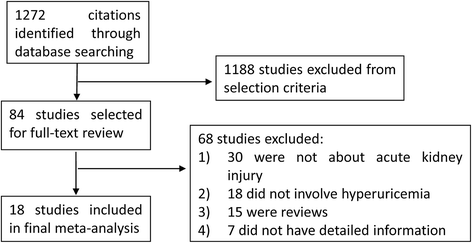
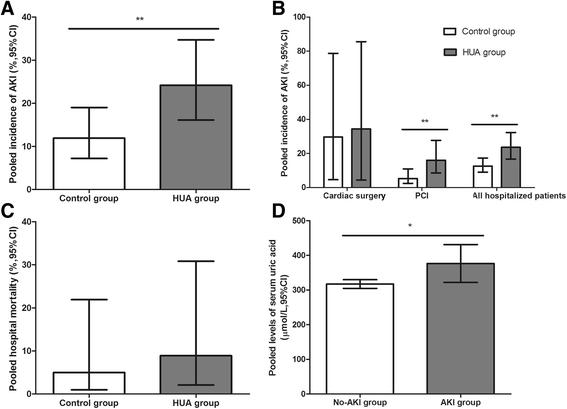
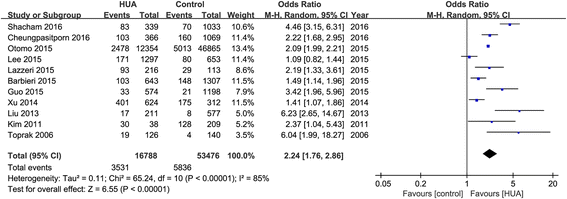
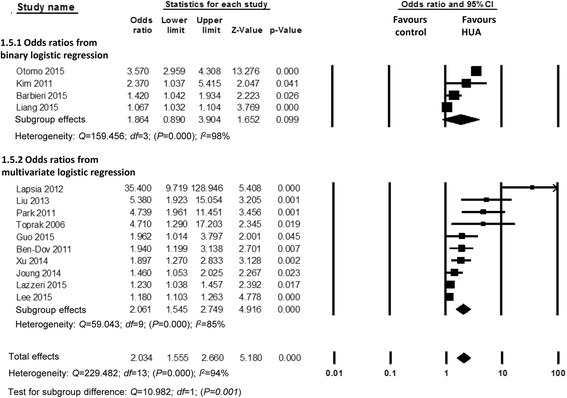
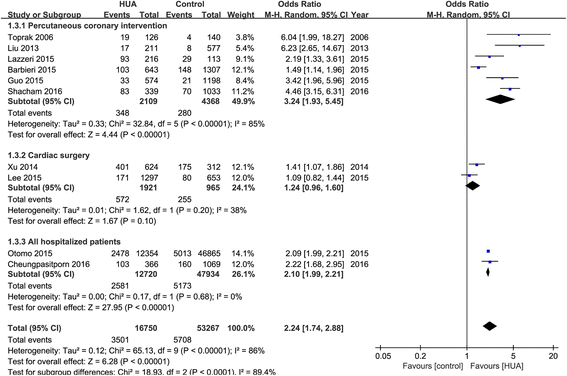
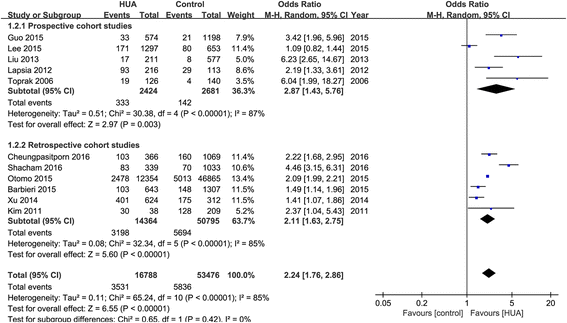


References
Publication types
MeSH terms
LinkOut - more resources
Full Text Sources
Other Literature Sources
Medical
Miscellaneous

